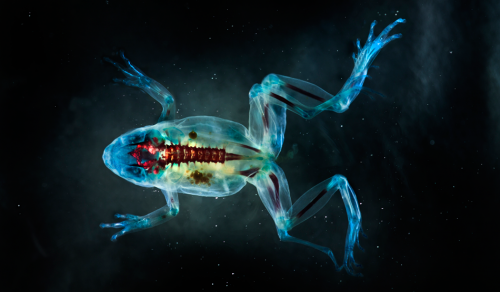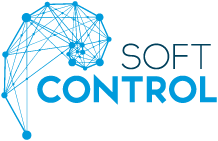
SOFT CONTROL: Art, Science and the Technological Unconscious
Multimedia Centre KIBLA, Maribor and Koroška galerija likovnih umetnosti (KGLU), Slovenj Gradec announce the international contemporary art project – entitled “SOFT CONTROL: Art, Science and the Technological Unconscious” – to be held from November 14 to December 15, 2012.
SOFT CONTROL: Art, Science and the Technological Unconscious
exhibition, conference, workshops, lectures
Dates: November 14 – December 15, 2012
Venues for the project:
KIBLA Multimedia Centre in Maribor, Slovenia
Koroška galerija likovnih umetnosti (KGLU), Slovenj Gradec, Slovenia
Opening day at KGLU, Koroška galerija likovnih umetnosti, Slovenj Gradec:
November 14, 2012
Opening day at the KIBLA Multimedia Centre, Maribor:
November 15, 2012
Participants: 30 artists from more than 11 countries
Curator of the project: Dmitry Bulatov
The international contemporary art exhibition SOFT CONTROL is being held as part of the Maribor – European Capital of Culture 2012 programme. The project will be presented at two sites: at the KIBLA Multimedia Centre (Maribor) and the Koroška galerija likovnih umetnosti (Slovenj Gradec). SOFT CONTROL will be curated by DMITRY BULATOV, artist, new media theoretician and curator of the National Centre for Contemporary Arts (Kaliningrad branch, Russia). The exhibition will feature the work of thirty artists from eleven different countries.
The status of European Capital of Culture provides a powerful impulse towards the realisation of new ideas and projects. This helps to draw in both local experts and internationally renowned professionals to participate in the cultural life of the city. Devoting special attention to contemporary readings of culture and the exchange of innovative ideas, the KIBLA Multimedia Centre (Maribor) and Koroška galerija likovnih umetnosti (Slovenj Gradec) have initiated a large-scale international project focused on the latest forms of artistic creation that have emerged at the intersection of art, science and technology. “The KIBLA Multimedia Centre is one of the most important organizations involved with contemporary art in Slovenia and Europe today”, remarked MMC KIBLA president and project director Aleksandra Kostič. “For the past fifteen years we have built up a great deal of experience in conducting various art projects and festivals.” The current project seeks to analyse the impact of the development of advanced technologies on the modern individual, and to elaborate cultural strategies for re-establishing people’s sense of engagement in the technological processes under way.
The capacity of an enterprise to both make a memorable impression on the audience and become a significant cultural event is largely determined by the cooperation of major curators, artists, philosophers and art theoreticians. In order to impart a universal format of artistic expression to the collective efforts, MMC KIBLA and Koroška galerija likovnih umetnosti Slovenj Gradec invited Dmitry Bulatov to curate the exhibition. Aleksandra Kostič commented on the choice: “Dmitry Bulatov is a well-known expert in the field of new media. As curator of the National Centre of Contemporary Arts (Russia) he has brought about more than twenty major international exhibitions and publishing projects devoted to various aspects of the interactions between art and high technology.”
INTERNATIONAL EXIBITION – ARTISTS
“SOFT CONTROL: Art, Science and the Technological Unconscious” will demonstrate various patterns of the use of new technologies in the current artistic process, and also present works of art that subject the role of technology and the media in contemporary civilisation to critical analysis. “When choosing the theme of the exhibition”, notes Bulatov, “we proceeded from the idea that science and technology are not merely tools that we use to achieve designated goals. On the contrary, technologies are raising new invisible boundaries all around us, penetrating into and transforming all spheres of human activity”. This raises the question of how we ought to understand the nature of control, of the compulsion that forces each and every one of us to participate in the formation of technological systems. In Bulatov’s opinion, “the task of the exhibition can be summed up as follows: to show how artists create new forms and new identities, not, however, as the protagonists of a historically determined technological narrative, but as the creators of that narrative”. Artists including Marina Abramović (Serbia/USA) with Suzanne Dikker and Matthias Oostrik (The Netherlands), Bill Vorn (Canada), Stelarc (Australia), James Auger and Jimmy Loizeau (United Kingdom), Polona Tratnik (Slovenia), Leo Peschta (Austria), Seiko Mikami (Japan), David Bowen (USA), Tuur Van Baalen (Belgium), Stefan Doepner and Lars Vaupel (Slovenia / Germany), The Tissue Culture & Art Project: Oron Catts and Ionat Zurr (Australia), Maja Smrekar (Slovenia), Kuda begut sobaki (Russia), Andy Gracie (United Kingdom / Spain), Brandon Ballengee (USA), Louis-Philippe Demers (Singapore), Ursula Damm (Germany), Guy Ben-Ary and Kirsten Hudson (Australia), Boredomresearch: Vicky Isley and Paul Smith (United Kingdom), Arthur Elsenaar and Remko Scha (NL) and others were invited to participate in the exhibition for this very reason. All in all, the SOFT CONTROL exhibition is projected to show more than twenty technological art installations, some of which are being promoted as both international and European premieres.
Commenting on the project’s format, Bulatov emphasises: “The foundation of our exhibition lies in works of art that were created using the latest 21st century technologies: robotics, information technologies, biomedicine and nanotechnology. Artworks like these are the ideal way to convey a sense of time, which combines signs of life (like a living organism) with those of a technically reproduced artefact. This is of utmost importance when we are dealing with the approach of a new post-biological age – a stage of our human existence when the technological constituent of one or another organism will not only become inseparable from the biological, but in the long run will even overtake it”.
EDUCATIONAL PROGRAMME
Along with the exhibition programme, the SOFT CONTROL project will involve other noteworthy events, all distinguished by this synthesis of artistic disciplines and scientific/technological research. Throughout the month, MMC KIBLA in Maribor and Koroška galerija likovnih umetnosti in Slovenj Gradec will host educational lectures and discussions, seminars and master-classes given by well-known experts in the field of contemporary technological art, as well as video screenings from major international media-art festivals such as: PRIX Ars Electronica (Austria), VIDA: Art & Artificial Life International Competition (Spain), MediaArtLab Centre for Art and Culture (Russia), Experiments in Art and Technology (E.A.T.) (USA), IMPAKT (The Netherlands), The Prometheus Center (Russia), and others.
INTERNATIONAL CONFERENCE
The showpiece event of the educational programme will be an international conference involving theoreticians and artists from Europe, USA, Canada, Australia and Singapore, to be held 16–17 November 2012. Conference participants invited include recognised experts in the field of contemporary art and new technologies such as Dr Roy Ascott (Plymouth University, UK) – one of Europe’s pioneers of cybernetic and telematic art; Dr Erkki Huhtamo (University of California Los Angeles, US) – well-known for research in media archaeology; Professor Andy Pickering (University of Exeter, UK) – an internationally-known figure in science and technology studies; Dr Pier Luigi Capucci (NABA International Academy of Arts and Design, Milan, IT) – a leading expert in art, science and technology. The conference will place special emphasis on the presentation of new strategies in contemporary technological art and training and education in the field, as well as practical presentations. Famous artists and practitioners including Stelarc (Australia), Polona Tratnik (Slovenia), Oron Catts and Ionat Zurr (Australia), Louise-Philippe Demers (Singapore) will enjoy the opportunity to express themselves in the papers, lectures and discussions.
Technological art today is a site for the testing of various artistic innovations. However, it is clear that this research into the New should not be seen merely as narrowly-specialised technical or aesthetic experiments, but first and foremost as cultural utterance and cultural activity. Only then can the results of the artists’ investigations have a significant influence on thought and social life. This is the sort of goal set by the “SOFT CONTROL: Art, Science and the Technological Unconscious” project – it aims to provide visitors with an opportunity to learn to relate to technology not as our slave or as a simple extension of ourselves, but as a mysterious construct with which we enter into creative unions and conclude cautious agreements.
The project will be realized with the support of The European Capital of Culture Maribor 2012, The Slovenian Ministry of education, science, culture and sport, Slovenj Gradec Municipality, Maribor Municipality and The Education, Audiovisual and Culture Executive Agency (EACEA).
Organized and produced by Koroška galerija likovnih umetnosti Slovenj Gradec and MMC KIBLA
Production:
ACE KIBLA
http://www.kibla.org
More about the project:
http://kiblix.org/kiblix2012/softcontrol/
SOFT CONTROL: Art, Science and the Technological Unconscious was performed within Maribor European Capital of Culture 2012
www.maribor2012.si
http://www.maribor2012.info/
